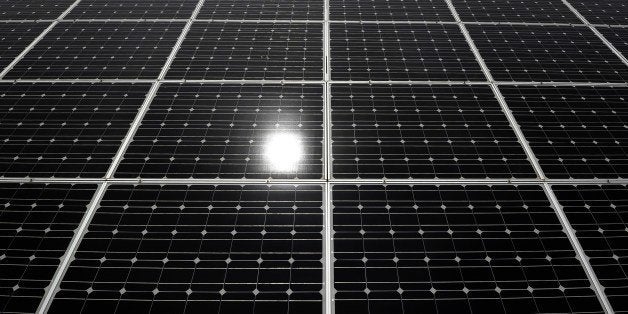
It's fairly obvious to most of us that solar panels aren't a great investment on a shady roof. Yet even in near-ideal solar locations, partial shade from clouds, tree limbs or dust and debris is pretty much inevitable. And that shade can have a big impact, reducing a solar array's output by as much as 30 percent over the course of a year. Now a group of students has developed a novel solution for this issue — and they've been awarded more than $225,000 in prize money to help get their technology to market.
What's the problem?
Many people don't realize that it's not just the shaded spot on a solar panel that loses output. Because solar arrays are usually divided into "strings" of panels, shade falling on one part of a string can impact the output for that entire string.
Here's how Australian solar company Solar Choice explains the impact:
You can think of a string of panels as something like a piece of pipe, and the solar power is like water flowing through that pipe. In conventional solar panel strings, shade is something that blocks that flow. If, for example, shade from a tree or a chimney is cast on even one of the panels in the string, the output of the entire string will be reduced to virtually zero for as long as the shadow sits there. If there is a separate, unshaded string, however, this string will continue to produce power as per usual.
There are already options out there for dealing with this issue. Many inverters now come with Maximum Power Point Tracking, a capability which basically takes whatever electricity is coming out of one string — even if that string is partially shaded — and adds it to a more powerful string to average output.
More output at lower costs
The team, which includes students from MIT, the California Institute of Technology, and Stanford University, is calling itself United Solar. Touting the catchphrase "shade happens," their technology was developed using a different approach to optimizing output. Instead of trying to balance output at the panel level, the students looked to balance at the individual cell level. The result was both better performance and considerably lower cost. Here's how MIT News explains the development:
The idea is that providing power balance for individual PV cells — instead of for an entire panel — allows for finer tuning of power optimization. “When you’re at the cell level, the improvement in energy capture under partial shading is basically two times better compared to panel level solutions,” Chang said. [Arthur Chang is an MIT PhD student in electrical engineering and computer science.] By using intrinsic parasitic components, specifically “diffusion capacitances” — unwanted electrical charges between two components — Chang was able to eliminate the need for external energy storage and integrate all other necessary components for power balance onto a single chip that can be manufactured at high volume and low cost.
It seems a lot of people are excited about this innovation, with United Solar taking home both grand prizes — the DOE Energy Efficiency and Renewable Energy Clean Energy Prize ($100,000) and the NSTAR MIT Clean Energy Prize ($125,000) — at the seventh annual MIT Clean Energy Prize competition. Having already built a successful prototype, the plan now is to complete lab testing in 2015 and start piloting the technology in outdoor solar arrays.
